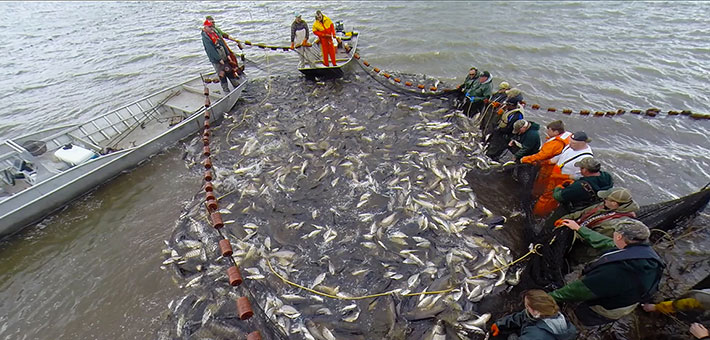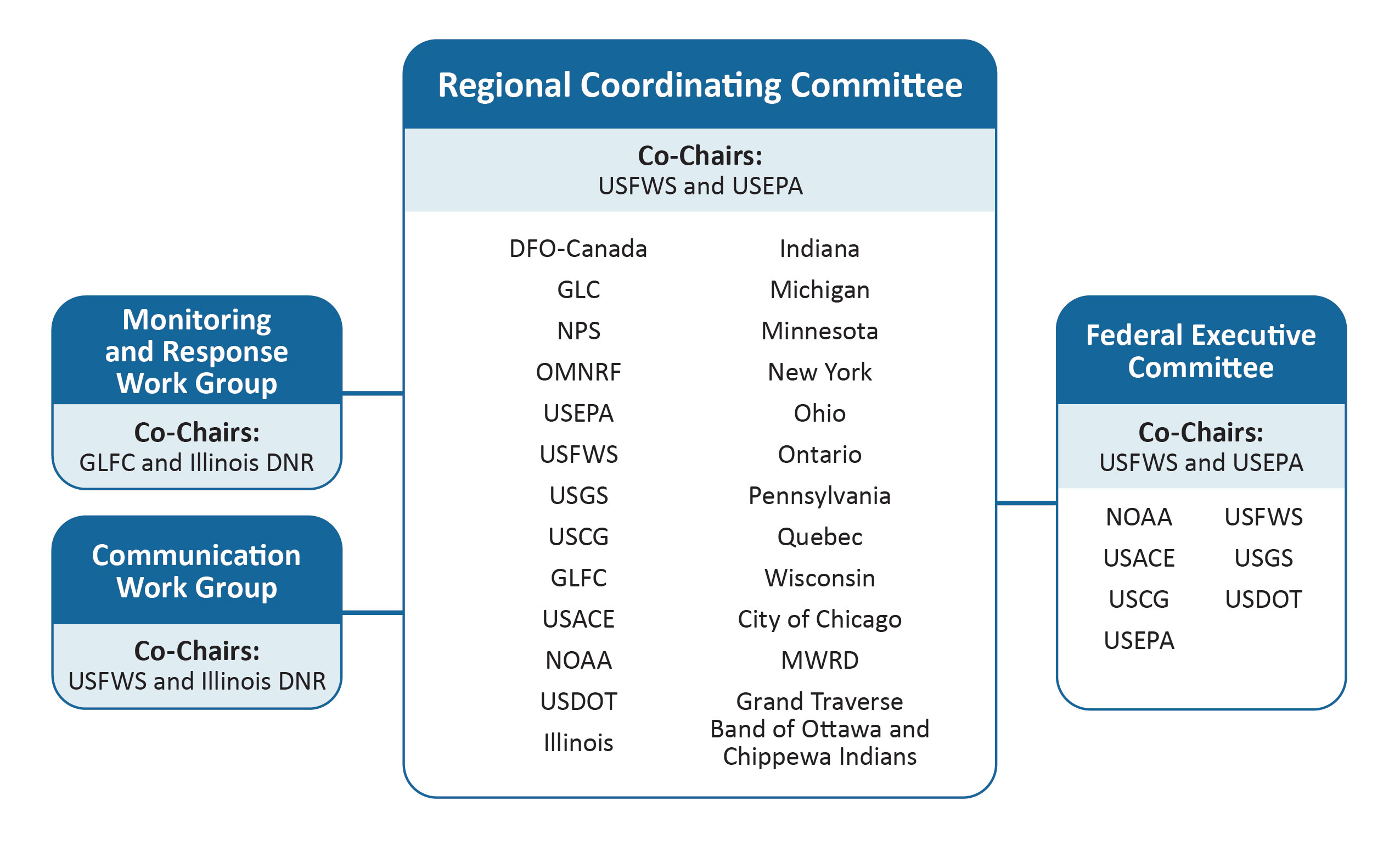About the Invasive Carp Regional Coordinating Committee
The multi-agency Asian Carp Rapid Response Workgroup first came together in late 2009 to implement the rapid response plan in light of a positive invasive carp eDNA result within the Chicago Area Waterway System. The Invasive Carp Regional Coordinating Committee (ICRCC) was formally established in early 2010 under the name Asian Carp Regional Coordinating Committee and represents the collective efforts of international, federal, state and municipal agencies to combat the spread of invasive carp into the Great Lakes. The ICRCC provides oversight and coordination of interagency prevention activities through development and implementation of an annual Invasive Carp Action Plan and complementary Monitoring and Response Plan.
The ICRCC’s objectives are to:
- Promote collection of biological information on invasive carp, their impacts, preferred habitats, and biological and ecological requirements.
- Identify additional research, technology, and data needed to effectively inform and support invasive carp management strategies.
- Support development of technologies and methods that will result in the control and management of invasive carp; and the transferability of these new tools for use in the control of other invasive species, where possible.
- Encourage the exchange of information between member agencies and stakeholders, and seek opportunities to transfer and further leverage control technologies developed as part of the Action Plan to other areas of the United States and Canada. Work under this objective by the ICRCC fulfills the coordination and notification requirements of the United States-Canada Great Lakes Water Quality Agreement.
- Coordinate implementation and evaluate the effectiveness of collaborative invasive carp assessment, prevention and control measures, as described in the annual Invasive Carp Action Plan.
The work of the ICRCC is supported by the Great Lakes Restoration Initiative, as well as partner agency resources. Funding is used to monitor, control and develop new technologies for invasive carp in the Great Lakes basin. As outlined in the annual Invasive Carp Action Plan, the ICRCC works to ensure a sustainable population of invasive carp do not become established in the Great Lakes.
There have been significant developments in the fight to keep invasive carp out of the Great Lakes. As we work together toward an effective long-term solution, we will continue our collaborative and coordinated daily efforts to protect the Great Lakes and Great Lakes communities.

Harvesting invasive carp using the Unified Method. Photo by Illinois DNR.

Organizational structure of the Invasive Carp Regional Coordinating Committee.
Structure of the ICRCC
The ICRCC consists of a federal executive committee (FEC), over 25 member agencies, and several working groups. The FEC has seven members and is co-chaired by the USFWS and EPA; it is charged with coordinating U.S. federal agency efforts in meeting the goals and objectives of the Action Plan.
Get to know our member agencies »
Monitoring and Response Work Group
The Monitoring and Response Work Group (MRWG) coordinates monitoring and response efforts within the Illinois River and the Chicago Area Waterway System. Co-chaired by the Great Lakes Fishery Commission and Illinois Department of Natural Resources, MRWG is composed of fisheries biologists and scientific experts from ICRCC member agencies. Since 2010, MRWG has published a Monitoring Response Plan that is updated annually.
Read Monitoring and Response Plans »
Communication Work Group
The Communication Work Group (CWG) facilitates internal and external messaging on the invasive carp prevention and control efforts of the partnership. The CWG, co-chaired by the USFWS and Illinois Department of Natural Resources, supports communications with the public, media, ICRCC member agencies and other interested stakeholder groups.
Black Carp Work Group
The Black Carp Work Group is focused on evaluating the status of black carp, identifying management needs and objectives, and developing a strategy for implementing monitoring and control actions to abate further expansion and establishment of this species in the U.S.
